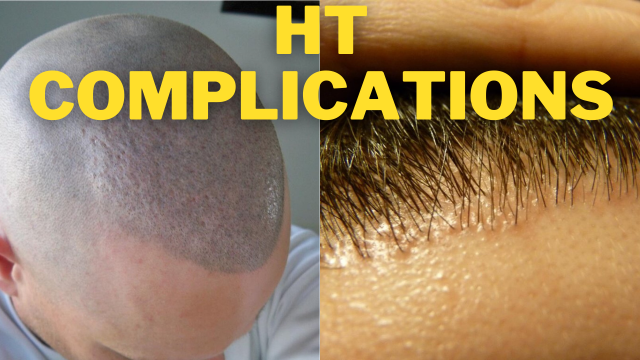Hair transplants have evolved tremendously over the past twenty to thirty years, but complications still occur due to surgical errors. That is why selecting the right surgeon is crucial to the success of your hair transplant. Complications occur for a variety of reasons. Most assume that a pluggy hairline or poor growth are the only complications, but other issues can occur during surgery. In this article, we will be going over each one and breaking down the causes and how to avoid them.
Pitting
Hair transplant surgeons create thousands of recipient sites in the balding area. The sites determine the angle and density of the hair transplant. Pitting is caused when the surgeon creates the sites too deep for the follicular unit grafts. The hair follicles grow with the tissue at the bottom raised as the grafts grow, unnatural appearing. So why does this happen? The most common reason is that the surgeon creates incisions too deep. The surgeon may create the sites deeper to stop excessive bleeding.
Cobblestoning
Cobblestoning refers to the appearance of the recipient zone, which is raised and bumpy, resembling a cobblestone street. This complication occurs due to surgical error. Cobblestoning occurred more often in the past when grafts were chunky and contained a lot of tissue. Placing chunky grafts into small sites can cause the sites to heal above the skin's surface. Cobblestoning can also occur when the surgeon creates recipient sites shallow and not deep enough for the grafts. Once the grafts heal, they become raised and bumpy.
Pluggy
Plugginess is the most common issue that affects hair transplant patients, and it can occur for various reasons. The main reason hairlines appear pluggy is due to multi-haired follicular unit grafts being placed at the very front of the hairline. In nature, hairlines contain the first row of single-haired follicular units. If you see multi-haired follicles in the front, it will look pluggy. The other reason hairlines appear pluggy is the placement and angles of the hair follicles. Natural hairlines contain macro and micro-irregularities. There are no straight hairlines in nature. If the surgeon places grafts too straight with no macro or micro-irregularities, the hairline could look pluggy.
Donor Overharvesting
This is a recent phenomenon that has become one of the most common complications, especially with the advent of low-cost, tech-driven Follicular Unit Excision (FUE). Overharvesting occurs in the donor site (back and sides of the scalp), where the hair follicles are harvested. If a surgeon or technician removes too many hair follicles, the appearance of the donor site will look patchy and moth-eaten. The patchy appearance can also occur if the grafts are extracted closely together. However, the donor is not overharvested because there are still viable grafts in the surrounding area. Overharvesting occurs when too many hair follicles are removed from the entire donor area.
How To Avoid These Complications
Surgeon selection is crucial. All of these issues occur due to surgical error or negligence. Choosing the right surgeon that performs the procedure, including the crucial parts like creating the recipient sites and harvesting the grafts, is essential. Do not go to a hair mill with a revolving door of technicians with questionable experience and skills performing the entire procedure. Even though these hair mills may charge less than what an actual surgeon may charge, you have to consider all of these complications and the cost involved in fixing these issues, if possible. If you're insecure about your hair loss, imagine how much worse it would be if you had to live with an unnatural result.
How To Research
The best way to research surgeons/clinics is by looking at patient reviews. You can find thousands of patient reviews on the popular hair transplant forum, the Hair Restoration Network. Lists are starting points for research. When you look at a list of recommendations, it's always good to research the physicians on various forums. The hair restoration network has a list of recommendations that the community created based on reviews and results. Again, do your due diligence when looking at any list online. Consult with many surgeons before choosing. Never let cost or location be the deciding factor. To submit virtual consultations with world-renowned hair transplant surgeons, click here.

